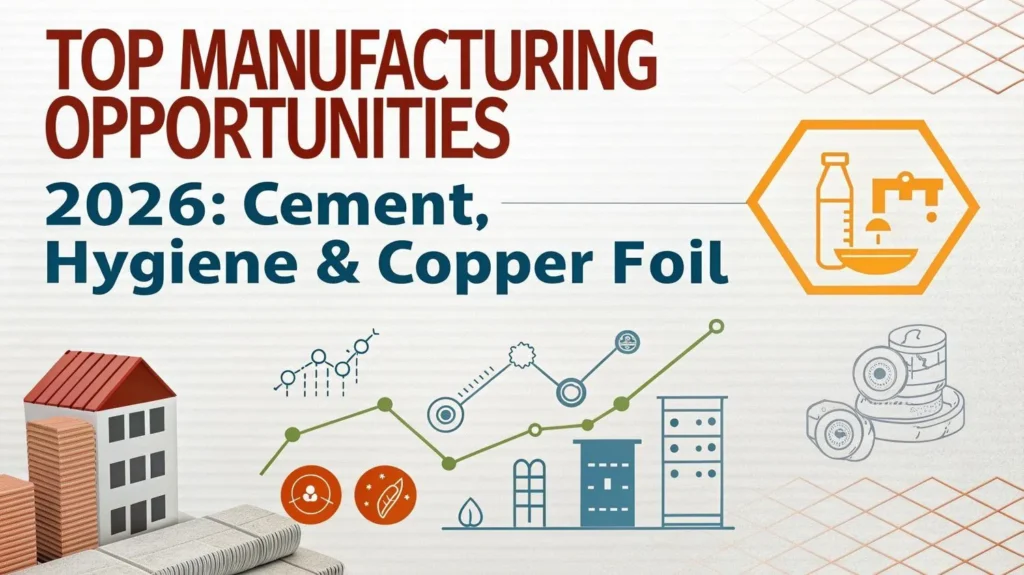The demand for collapsible tubes is increasing due to their wide use in pharmaceuticals, cosmetics, food, and industrial products. Collapsible tubes are ideal for packaging creams, gels, ointments, adhesives, and other semi-solid or viscous substances. With the growing demand for convenient and hygienic packaging, starting a collapsible tubes production plant can be a profitable venture. Entrepreneurs with a vision for manufacturing and packaging solutions can capitalize on this thriving industry.
Market Potential of Collapsible Tubes Production
The global packaging industry is evolving rapidly, and collapsible tubes are gaining popularity due to their efficiency, ease of use, and aesthetic appeal. These tubes are used across several sectors such as personal care (toothpaste, hand creams), pharmaceuticals (ointments, antiseptics), and food (sauces, pastes). The flexibility, leak-proof nature, and lightweight design of collapsible tubes make them highly preferred over rigid packaging.
India’s growing middle class, increased focus on hygiene, and rising consumption of FMCG and healthcare products have created a robust market for collapsible tubes production. Moreover, the demand for sustainable and recyclable materials is driving innovation in aluminum and plastic tube packaging.
Types of Collapsible Tubes
Before starting a collapsible tubes production plant, it’s important to decide the type of tubes you will manufacture. The main types include:
-
Aluminum Collapsible Tubes – These are commonly used in pharmaceutical and cosmetic industries due to their barrier properties.
-
Plastic Laminated Tubes (Laminates) – Ideal for toothpaste, creams, and gels. They are made from multiple layers of polymers and offer excellent print quality.
-
Co-extruded Plastic Tubes – These tubes are formed using co-extrusion technology and are used in premium cosmetics and pharmaceutical packaging.
The decision on which type to produce depends on the target industry, investment capacity, and available resources.
Steps to Start a Collapsible Tubes Production Plant
1. Business Planning and Market Research
The first step in setting up a collapsible tubes production plant is preparing a detailed business plan. Conduct comprehensive market research to understand customer needs, competitor analysis, pricing trends, and regulatory standards. Your plan should cover:
-
Product types and applications
-
Target customer segment
-
Production capacity
-
Raw material sourcing
-
Marketing and distribution strategies
-
Financial projections and ROI
2. Company Registration and Legal Compliance
You must register your business as a private limited company, partnership firm, or sole proprietorship. Apply for the following licenses and registrations:
-
GST registration
-
Factory license
-
Pollution control board NOC
-
Fire and safety clearance
-
BIS certification (if required for packaging standards)
-
Trademark registration for branding
3. Selecting Location and Infrastructure
Choose a location that has good access to transportation, utilities (electricity, water), and skilled labor. The plant area should accommodate raw material storage, production units, quality control, packaging, and finished goods storage.
For a small to medium-scale collapsible tubes production plant, a space of around 3,000 to 5,000 sq. ft. may be required. Ensure compliance with zoning and industrial area guidelines.
4. Procurement of Machinery and Equipment
The machinery depends on the type of tubes you plan to manufacture. For aluminum tubes, you’ll need extrusion presses, heading machines, annealing ovens, internal coating machines, printing machines, and crimping machines.
For laminated or plastic tubes, the plant requires:
-
Extrusion machines
-
Tube forming machines
-
Sealing and trimming units
-
Printing and labeling machines
-
Inspection and packing stations
Modern machines with automation and high-speed capabilities improve productivity and ensure uniform quality. You can opt for semi-automatic or fully automatic lines based on your investment capacity.
5. Raw Materials and Supply Chain
Key raw materials include:
-
Aluminum slugs (for aluminum tubes)
-
Plastic resins such as LDPE, LLDPE, HDPE (for plastic tubes)
-
Laminated foils (for laminated tubes)
-
Printing inks and lacquers
-
Caps and closures
Establish strong relationships with reliable suppliers to ensure a consistent supply of high-quality raw materials. Bulk purchasing can reduce costs significantly.
6. Hiring Skilled Workforce
Recruit skilled personnel for operating machinery, quality control, design and printing, packaging, and maintenance. Also hire administrative staff for logistics, sales, finance, and compliance.
You may need:
-
Plant manager
-
Machine operators
-
Quality inspectors
-
Designers for tube printing
-
Maintenance technicians
Regular training is essential to ensure safety and efficiency in the collapsible tubes production process.
7. Production Process Overview
The general production process includes:
-
Extrusion/Forming: Tubes are formed by extrusion (plastic) or impact extrusion (aluminum).
-
Trimming and Coating: Edges are trimmed and internal coatings are applied to prevent product reaction.
-
Printing: Tubes are printed using offset or screen printing.
-
Capping: Tubes are capped with closures and tested for leakage.
-
Packaging: Finished tubes are packed and stored for dispatch.
Strict quality control measures must be implemented at every stage to ensure the tubes meet safety and functional standards.
8. Marketing and Distribution
Branding and marketing are critical for attracting clients from pharmaceutical companies, cosmetic brands, and FMCG manufacturers. Build a strong portfolio, invest in professional packaging design, and highlight the benefits of your product like durability, leak-proof sealing, and aesthetics.
Promote your collapsible tubes production business via:
-
B2B portals (IndiaMART, TradeIndia)
-
Direct marketing to pharmaceutical and cosmetic manufacturers
-
Digital marketing campaigns
-
Trade shows and industrial expos
Having a distribution network or working with packaging wholesalers can help expand your reach.
9. Financial Investment and Profitability
Starting a medium-scale collapsible tubes production plant may require an investment of ?40–?70 lakhs (approx.), depending on the technology used and scale. The key cost heads include:
-
Land and building
-
Machinery and installation
-
Raw material stock
-
Staff salary and training
-
Utility connections
-
Marketing and branding
Profit margins in the collapsible tube industry range from 15% to 25%, depending on the volume, quality, and specialization (e.g., pharmaceutical-grade packaging). You can expect ROI within 2–3 years with consistent operations.
10. Sustainability and Innovations
With environmental concerns rising, focusing on recyclable and eco-friendly materials will add value to your brand. Biodegradable plastics and recyclable aluminum are gaining traction. Innovations like smart packaging (QR codes, tamper-proof seals) and high-resolution digital printing are also trending.
Investing in R&D to improve packaging performance, shelf life, and sustainability can help you gain a competitive edge in the collapsible tubes production market.
Conclusion
Starting a collapsible tubes production plant is a lucrative manufacturing business in the current packaging-driven economy. With a strategic approach involving market research, investment planning, modern machinery, and efficient production systems, entrepreneurs can build a sustainable and profitable venture. The increasing demand from sectors like pharmaceuticals, cosmetics, and food ensures a steady market for high-quality collapsible tubes. By combining technology, branding, and innovation, your business can scale to meet domestic and export demands efficiently.





